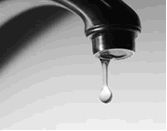Wise Water Use in the Garden
We are now entering our fourth year of a severe drought. The time is right to talk about saving water (and money). Between 40% and 50% of California’s water is used outdoors. Think of the impact if we save 25% of that water. Following are some tips for saving water outdoors:
1. Adapt your watering schedule to the weather and the season. Obviously, during intense heat, many plants (tomatoes and pumpkins, for example) need more water. However, we can be grateful that slightly cooler temperatures may mean a less vigorous watering schedule. Feel the soil around your plants, dig down to the level of the roots. Observe whether there is adequate water in the soil. As temperatures cool into fall, plants need less water. And during the winter in the Mother Lode, it’s usually not necessary to water at all.
Consider applying a few inches of mulch to the soil surface around thirsty plants. Mulch cools the soil temperature, reducing evaporation, which allows water to remain in the soil for a longer period of time where plant roots can find it. By watering only in the early morning or at night reduces evaporation from the hot sun.
2. Inspect your irrigation system monthly; adjust sprinkler heads. Look for leaks, broken sprinkler heads, and misaligned heads. Flush out clogged drip emitters and micro-spray heads. Often water isn’t being applied evenly; although the sprinklers are running, some areas may be getting too little water. Adjust sprinkler heads so that areas that don’t need water—asphalt, sidewalks, streets and roads—aren’t being watered. Avoid “urban drool.”
3. Consider “smart” technology or a rain shutoff switch. There are climate and soil-moisture sensor-based controllers that will evaluate and calculate a watering schedule based on conditions in your microclimate. And rain shutoff switches can be retrofitted to your current irrigation system, thus saving money and water when it rains.
4. Consider low volume drip or micro irrigation. Gardens, trees and shrubs can all be irrigated using drip emitters, micro spray jets or bubblers. Low volume systems irrigate slowly, allowing water to be absorbed by our clay soils, and minimizing evaporation, runoff and overspray.
5. Apply ONLY as much water as needed. Too much water in the root zone for long periods can also be damaging to plants due to a reduction in oxygen around the root hairs. This can occur when irrigation is performed too frequently in an amount too great for the plant to remove and use. Drought-tolerant plants adopt a number of strategies to reduce water loss–deep taproots to find water at greater soil depths; fine, silvery leaf hairs to reduce wind flow; or a waxy coating to reduce water evaporation from leaf surfaces. Consider replacing some of your plantings with drought-tolerant natives.
6. Reduce the size of your lawn or eliminate it altogether. This is not England—with its damp, foggy weather pattern that reduces transpiration. Grass is one of the biggest water users around. In fact, the reference standard for evapotranspiration (against which all other plants are measured) is turf grass completely covering the ground to a depth of four to six inches.
The Tuolumne Utilities District Board of Directors has adopted Phase III water conservation measures. It was decided at its Board meeting held on Tuesday, April 28, 2015. A mandatory water reduction of 30% has been set for all customers based upon their water usage of 2013.
Listed below are the water conservation restrictions:
• Any single family equivalent household using 800 cubic feet of water per billing cycle or 400 cubic feet per month has met the reduction goal and is not subject to further conservation.
Outdoor Landscapes:
• All irrigation shall occur between the hours of 7 pm and 10am. Limited outdoor irrigation is requested with the use of buckets or properly maintained irrigation systems. Outdoor watering will be limited to 10 minutes per cycle for spray systems and no longer than 30 minutes per cycle for drip systems. The following schedule has been set depending on your property address.
• All users of this water must contact the District for times and location of water availability. Use of water at any Property Address Ending With An Outdoor Watering Schedule Even Number Tuesday, Thursday and Saturday Odd Number Wednesday, Friday and Sunday No Watering Monday other time or location is subject to a $500 fine per occurrence and possible prohibition of water use
Non-Essential Water Use: The following are prohibited during the mandatory water restrictions:
• Using potable water to wash sidewalks, driveways or other hard-surfaced areas unless it is needed for public health or sanitation purposes;
• Allowing runoff when irrigating with potable water;
• Using hoses with no shutoff nozzles to wash cars, boats, trailers, equipment or other vehicles;
• Using potable water in decorative water features that do not recirculate the water;
• Irrigating outdoors during and within 48 hours following measureable rainfall;
• Use of water from hydrants for construction purposes or any other purposes other than firefighting; Dust control, earth compaction, and other construction use of raw or potable water are limited to specific times and locations determined by the District
If we all pull together and treat water as the precious resource it is, we can make it through these severe drought years.
Rebecca Miller-Cripps is a University of California Cooperative Extension of Tuolumne County Master Gardener.

